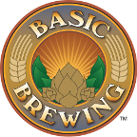Difference between revisions of "The Science of Mashing"
m |
|||
| Line 13: | Line 13: | ||
The article [[Starch Conversion]] explains in detail how in mashing the starch found in malt or mashtun adjuncts is converted into fermetable and unfermentable sugars. It covers the process of gelatinization and the enzymatic hydrolyzation. | The article [[Starch Conversion]] explains in detail how in mashing the starch found in malt or mashtun adjuncts is converted into fermetable and unfermentable sugars. It covers the process of gelatinization and the enzymatic hydrolyzation. | ||
| − | |||
| − | |||
| − | |||
| − | |||
| − | |||
| − | |||
| − | |||
| − | |||
| − | |||
| − | |||
| − | |||
Revision as of 01:51, 5 January 2009
In mashing the milled grain (grist) is mixed with water to create the mash. It is an essential process in the production of beer and a continuation of the malting process on the way to sweet wort. During the mash soluble malt compounds like enzymes, proteins and sugars are dissolved by the mash water and insoluble malt compounds like starch and some long chained proteins are converted into soluble compounds and dissolved into the water. The latter happens through a combination of physical and biochemical process which can be controlled by the brewer to achieve a sweet wort of desired quality. The biochemical processes are catalyzed by various malt enzymes. Their function and behavior is dependent on the conditions in the mash (e.g. temperature, pH, concentration, etc.) and the brewer should be familiar with that behavior in order to control the quality of the sweet wort that is run off from the mash in the lautering process.
The article Enzymes explains the dynamics of enzymatic reactions. In particular how parameters like sunbstrate concentration, enzyme concentration, temperature and time affect the speed of the enzymatic reaction and the amount of product that is produced.
The article Carbohydrates sheds some light on the largest group of substrate and products that is involved in mashing. It details the structure of simple and complex carbohydrates all the way to the structure of the starch granule.
The article Starch Conversion explains in detail how in mashing the starch found in malt or mashtun adjuncts is converted into fermetable and unfermentable sugars. It covers the process of gelatinization and the enzymatic hydrolyzation.


